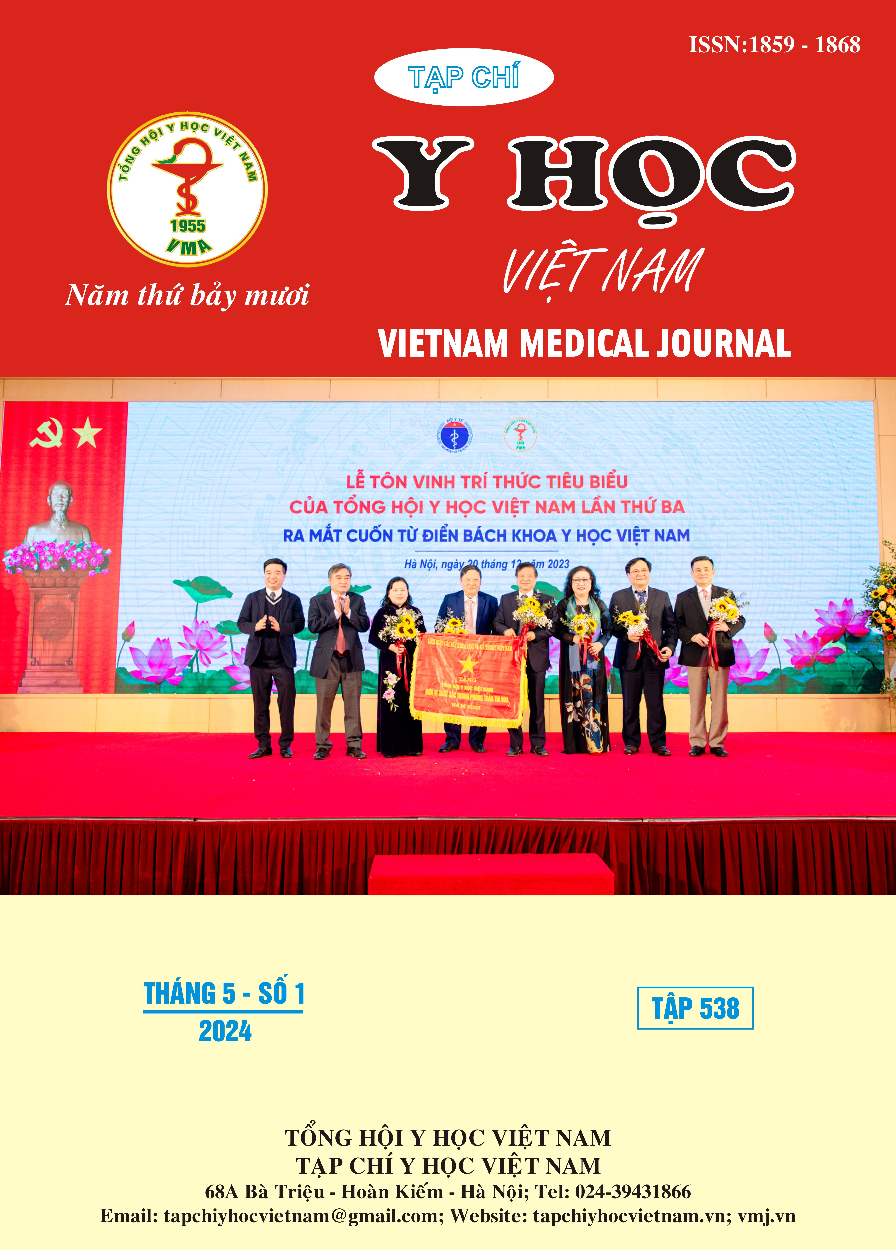CHARACTERISTICS OF THE GRACE SCORE IN PATIENTS WITH ACUTE MYOCARDIAL INFARCTION AND DIABETES
Main Article Content
Abstract
Introduction: Acute myocardial infarction is a common disease, causing high morbidity and mortality. No studies in Vietnam have used this scale to predict patients with acute myocardial infarction and type 2 diabetes. Objectives: Describe the characteristics of the GRACE score in patients with acute myocardial infarction and diabetes. Subjects - Methods: Prospectively describe a group of patients with acute myocardial infarction and type 2 diabetes. Stratify into low, medium, and high-risk categories of in-hospital mortality when GRACE score is ≤ 108, 109-140, and > 140. Results: From November 2022 to June 2023, 232 patients were surveyed. Among them, 49.14% were men, with an average age of 66.17 ± 10.05 years. Cardiovascular risk factors included dyslipidemia, hypertension, smoking, and a family history of premature cardiovascular disease, accounting for 90.52%, 89.66%, 30.17%, and 2.16%, respectively. The average GRACE score was 122.53 ± 28.25, with the lowest being 60 and the highest being 222. Risk stratification according to GRACE score showed low, medium, and high-risk categories accounting for 31.47%, 47.41%, and 21.12%, respectively. The average GRACE score in the ST-elevation myocardial infarction group was significantly higher than in the non-ST-segment elevation myocardial infarction group, 129.31 ± 29.64 and 117.12 ± 25.95, respectively, with p=0.002. Conclusion: Patients with acute myocardial infarction and type 2 diabetes have relatively high GRACE scores. The average GRACE score of the ST-segment elevation myocardial infarction group was higher than that of the non-ST-segment elevation myocardial infarction group.
Article Details
Keywords
Acute myocardial infarction, diabetes, GRACE score.
References
2. Babes EE, et al. Acute coronary syndromes in diabetic patients, outcome, revascularization, and antithrombotic therapy. Biomed Pharmacother. Apr 2022; 148: 112772. doi: 10.1016/j.biopha .2022.112772
3. Collet JP, et al. 2020 ESC Guidelines for the management of acute coronary syndromes in patients presenting without persistent ST-segment elevation. Eur Heart J. Apr 7 2021;42(14):1289-1367. doi:10.1093/eurheartj/ehaa575
4. Linh NK. Đánh giá khả năng dự báo biến cố của thang điểm TIMI và GRACE trên bệnh nhân hội chứng mạch vành cấp. Trường đại học Y Dược, Đại học Quốc gia Hà Nội. 2021.
5. Kao YT, et al. Comparison of the TIMI, GRACE, PAMI and CADILLAC risk scores for prediction of long-term cardiovascular outcomes in Taiwanese diabetic patients with ST-segment elevation myocardial infarction: From the registry of the Taiwan Society of Cardiology. PLoS One. 2020;15(2): e0229186. doi: 10.1371/journal. pone.0229186
6. Baeza-Román A, et al. Predictive power of the grace score in population with diabetes. Int J Cardiol. Dec 1 2017;248:73-76. doi:10.1016/ j.ijcard.2017.06.083
7. Baluja A, et al. Prediction of major adverse cardiac, cerebrovascular events in patients with diabetes after acute coronary syndrome. Diab Vasc Dis Res. Jan-Feb 2020; 17(1): 1479164119892137. doi: 10.1177/ 1479164119892137
8. Neves VB, et al. Validation of the Grace Risk Score to Predict In-Hospital and 6-Month Post-Discharge Mortality in Patients with Acute Coronary Syndrome. International Journal of Cardiovascular Sciences. 2021;35(2):174-180. doi:10.36660/ijcs.20210019


